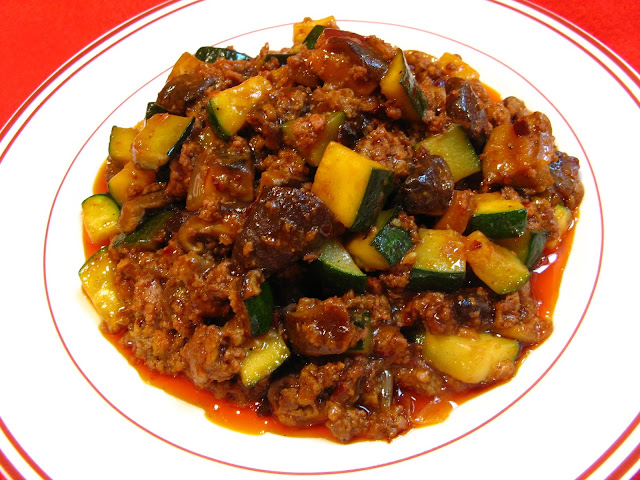This will likely be my last post
for 2016. Since Dungeness crab, a crab local to where I live, is in season now
and making this tasty recipe is real easy, I felt that this would be an
appropriate last dish for the end of the year. I hope you’ve enjoyed, and maybe
tried, a few of the recipes that I’ve posted this year. I wish you and your
family a Happy New Year for 2017!
As I stated earlier, Dungeness
crab is a local delicacy and it’s in season right now. I’m fortunate enough to
be able to buy cooked Dungeness crabs at my local Asian market. I find that to
be a real time saver since I don’t have to cook the crabs before shelling to
separate the meat from the shell. Dungeness crabs are usually weigh around one
pound (454 grams) and yield about half their weight in meat (1/2 lb. or 277 g.).
So you’ll need at least two crabs to get approximately 1 lb. (454 g.) of meat.
If you’re pressed for time or can’t obtain Dungeness crab, you can always use
canned or frozen crab. The crab is added at the end of cooking (when the clay
pot rice rests for 10 minutes) to heat up the crab and preserve the crab flavor.
I followed the same procedure
outlined in the Clay
Pot Rice (煲仔飯, Bou1 Zai2
Faan6) recipe, but add mini-Shiitake mushrooms, together with
the Dungeness crab meat. The rice is made even tastier by using chicken stock
and the Shiitake mushroom rehydration liquid to cook the rice instead of water.
I made my own stock using the Bone Soup
(湯, Tong1) recipe, but if you’re
pressed for time, canned or boxed stock can be substituted. The other option is
to just use the Shiitake rehydration liquid.
Using a clay pot to make rice is
very similar to making rice in a pot. A crust is produced on the bottom of the
clay pot, similar to cooking rice in a pot, and you don’t have to reboil to
release the scorched rice from the bottom. The taste of the rice is very
similar to making rice in a pot. The sequence of cooking the rice in a clay pot
is:
- Pre-heat the clay pot over medium heat for 5
minutes to prevent shocking the clay pot and possible breaking it.
- Bring the clay pot rice to a boil over
medium-high heat for 10 minutes.
- Simmer the rice for 15 minutes over low heat.
- Scorch the rice using medium-high heat for 10
minutes.
- Turn off the heat and allow the clay pot to sit
for 10 minutes to release the scorched rice from the bottom.
- Serve the rice.
Given that there are many variables when cooking rice in a
clay pot, the cooked rice will vary from every time you cook it. If more water
is used, the rice will take longer to cook. If too little water is used, the
rice becomes more al dente and the volume decreases because the rice doesn’t
get fluffy. Burner heat will determine how quickly the rice cooks and how
scorched the rice will get. You just have to experiment and watch for the
indications that signal when the rice is cooked to your personal preference.
Making rice in a clay pot seems like a simple task, but you’ll find that it
takes practice to get consistent results.
Enjoy!






